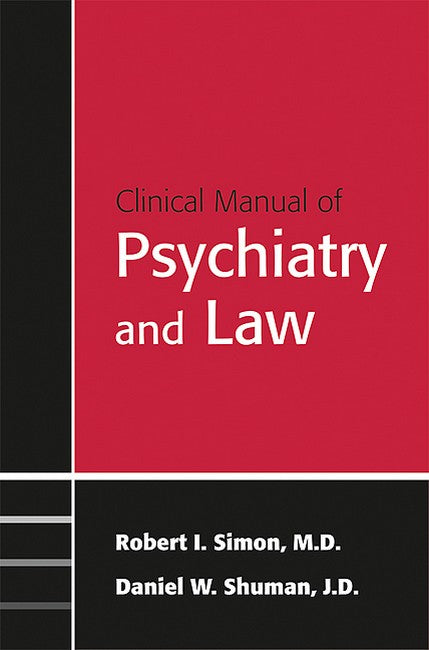The Psychiatrist-Patient Relationship. Creation of the psychiatrist-patient relationship. The psychiatrist as a fiduciary: avoiding the double agent role. The unduly defensive psychiatrist and the provision of substandard care. Confidentiality in clinical practice. Protecting the confidentiality of the clinical record: a life-and-death matter. Patient Rights. The right to refuse treatment and the therapeutic alliance. Informed consent: maintaining a clinical perspective. Involuntary hospitalization: patient rights and professional duties. Somatic Therapies. Drug therapy and the varieties of legal liability. Tardive dyskinesia: reducing legal liability through risk-benefit analysis. Electroconvulsive therapy and the acutely psychotic, nonconsenting patient. Violent Patients. Clinical risk management of the suicidal patient. Clinical approaches to the duty to warn and protect endangered third persons. Preventing the premature release of dangerous patients. Restraint, seclusion, and the least-restrictive alternative. Negligent Treatment. Negligent psychotherapy: maintaining treatment boundaries with the borderline patient. Undue familiarity: the sexual misconduct of psychotherapists. Abandonment and the psychiatrist's duty to care for the patient. Radical therapies and intentional torts. The legal consequences of outrageous behavior toward patients. The Psychiatrist. The psychiatrist's professional relationship with nonmedical therapists. Defamation in clinical practice. The impaired psychiatrist. The psychiatrist must survive: understanding and coping with malpractice litigation. Epilogue: We are belegaled. Appendix 1: Principles of Medical Ethics With Annotations Especially Applicable to Psychiatry. Appendix 2: Sample forms. Appendix 3: Glossary of legal terms. Appendix 4: Common abbreviations and terms used in legal citations. Table of cases. Index.

